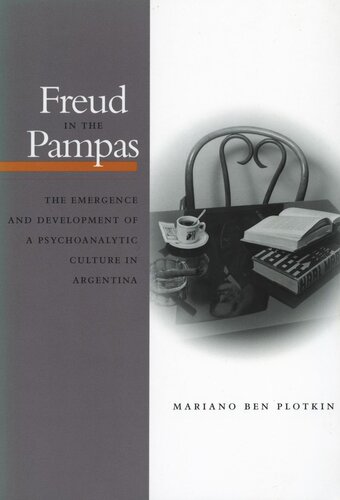

Most ebook files are in PDF format, so you can easily read them using various software such as Foxit Reader or directly on the Google Chrome browser.
Some ebook files are released by publishers in other formats such as .awz, .mobi, .epub, .fb2, etc. You may need to install specific software to read these formats on mobile/PC, such as Calibre.
Please read the tutorial at this link: https://ebookbell.com/faq
We offer FREE conversion to the popular formats you request; however, this may take some time. Therefore, right after payment, please email us, and we will try to provide the service as quickly as possible.
For some exceptional file formats or broken links (if any), please refrain from opening any disputes. Instead, email us first, and we will try to assist within a maximum of 6 hours.
EbookBell Team

4.3
58 reviewsThis is a fascinating history of how psychoanalysis became an essential element of contemporary Argentine culture—in the media, in politics, and in daily private lives. The book reveals the unique conditions and complex historical process that made possible the diffusion, acceptance, and popularization of psychoanalysis in Argentina, which has the highest number of psychoanalysts per capita in the world. It shows why the intellectual trajectory of the psychoanalytic movement was different in Argentina than in either the United States or Europe and how Argentine culture both fostered and was shaped by its influence. The book starts with a description of the Argentine medical and intellectual establishments’ reception of psychoanalysis, and the subsequent founding of the Argentine Psychoanalytic Association in 1942. It then broadens to describe the emergence of a “psy culture” in the 1960s, tracing its origins to a complex combination of social, economic, political, and cultural factors. The author then analyzes the role of “diffusers” of psychoanalysis in Argentina—both those who were part of the psychoanalytic establishment and those who were not. The book goes on to discuss specific areas of reception and diffusion of psychoanalytic thought: its acceptance by progressive sectors of the psychiatric profession; the impact of the psychoanalytically oriented program in psychology at the University of Buenos Aires; and the incorporation of psychoanalysis into the theoretical artillery of the influential left of the 1960s and 1970s. Finally, the author analyzes the effects of the military dictatorship, established in 1976, on the “psy” universe, showing how it was possible to practice psychoanalysis in a highly authoritarian political context.